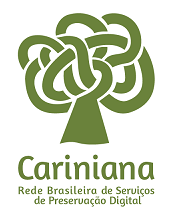Shakespeare’s Pictorial Imagination in A Midsummer Night’s Dream
DOI:
https://doi.org/10.5433/1678-2054.2013v25p6Keywords:
Shakespeare, text, image, intermedialityAbstract
This essay aims to examine the appropriation of motifs, codes and conventions from the visual arts for structural, thematic and aesthetic purposes in A Midsummer Night’s Dream (1595-1596). Shakespeare’s creative transfer of symbolic images and philosophical ideas from painting to dramatic poetry will be discussed in the light of theoretical perspectives formulated by Claus Clüver, Liliane Louvel and Tamar Yacobi who widened the scope of the concepts of ekphrasis and intersemiotic transposition in contemporaneity.Downloads
References
BRUHN, Siglind. A Concert of Painting: “Musical Ekphrasis” in the Twentieth Century. 2001. Disponível em: <http://www.eunomios.org/contrib/bruhn1/bruhn1.html> Acesso em 20 jun. 2013.
CLÜVER, Claus. Da transposição intersemiótica. Márcia Arberx, org. Poéticas do Visível: Ensaios sobre a Escrita e a Imagem. . Belo Horizonte: Programa de Pós-Graduação em Letras: Estudos Literários, Faculdade de Letras da UFMG, 2006. 107-166.
CLÜVER, Claus. Ekphrasis Reconsidered: On Verbal Representation of Non-Verbal Texts. UllaBritta Lagerroth, Hans Lund & Erik Hedling , orgs. Interart Poetics: Essays on the Interrelations of the Arts and Media. Amsterdam and London: Rodopi, 1997. 19-33.
EIDT, Laura M. Sager. Writing and Filming the Painting: Ekphrasis in Literature and Film. Amsterdam and New York: Rodopi, 2008.
HEFFERNAN, James. Museum of Words: The Poetics of Ekphrasis from Homer to Ashbery. Chicago: The University of Chicago Press, 1993.
KOLIN, Philip C. Venus and Adonis: Critical Essays. London : Routledge, 1997.
KOTT, J. Titania and the Ass’s Head. Shakespeare, Our Contemporary. Trans. Boleslaw Taborski. London: Routledge, 1994. 171-190.
LICHTENSTEIN, Jacqueline. O paralelo das artes. Jaqueline Lichtenstein, org. A Pintura – O Paralelo entre as Artes. Vol. 7. Coordenação da trad. Magnólia Costa. São Paulo: Editora 34, 2005. 9-16.
LOUVEL, Liliane. A descrição ‘pictural’: por uma poética do iconotexto. Márcia Arbex, org. Poéticas do Visível: Ensaios sobre a Escrita e a Imagem. Belo Horizonte: Programa de Pós-Graduação em Letras: Estudos Literários, Faculdade de Letras da UFMG, 2006. 191-220.
MOSER, Walter. As relações entre as artes: Por uma arqueologia da intermidialidade. Aletria: Revista de Estudos de Literatura (Belo Horizonte) 6 (1998-1999): 42-65.
PANOFSKI, Erwin. Problems in Titian, Mostly Iconographic. New York: New York University Press, 1969.
SALAMAN, Malcolm Charles. Shakespeare in Pictorial Art. Ed. Charles Holme. Salt Lake City: Ulan Press, 2012.
SHAKESPEARE, William. A Midsummer Night’s Dream. Arden Shakespeare. Second Series. Ed. Harold Brooks. London: Thomson Learning, 2003.
SHAKESPEARE, William. Sonho de uma Noite de Verão. Trad. Barbara Heliodora. Rio de Janeiro: Lacerda, 2004.
YACOBI, Tamar. Verbal Frames and Ekphrastic Figuration. Ulla-Britta Lagerroth, Hans Lund & Erik Hedling , orgs. Interart Poetics: Essays on the Interrelations of the Arts and Media. Amsterdam and London: Rodopi, 1997. 35-46.
YACOBI, Tamar. The Ekphrastic Model: Forms and Functions. Valerie Robillard & Els Jongeneel,
eds. Pictures into Words: Theoretical and Descriptive Approaches to Ekphrasis. Amsterdam: VU University Press, 1998. 21-34.
WIND, Edgar. Pagan Mysteries in the Renaissance: An Exploration of Philosophical and Mystical Sources of Iconography in Renaissance Art. New York: Norton & Company Inc., 1968.
Downloads
Published
How to Cite
Issue
Section
License
Authors who publish in this journal agree to the following terms:
a) The authors retain the copyright and grant the journal the right of first publication, the work being simultaneously licensed under the Creative Commons Attribution-NonCommercial 4.0 International License, allowing the sharing of the work with acknowledgment of the authorship of the work and initial publication in this journal.
b) Authors are authorized to assume additional contracts separately, for non-exclusive distribution of the version of the work published in this journal (eg, publish in an institutional repository or as a book chapter), with acknowledgment of authorship and initial publication in this journal.
c) Authors are allowed and encouraged to publish and distribute their work online (e.g. in institutional repositories or on their personal page) after the editorial process, as this can generate productive changes as well as increase impact and citation of the published work (See The Effect of Open Access).
d) The authors of the approved works authorize the journal to, after publication, transfer their content for reproduction in content indexers, virtual libraries and the like.
e) The authors assume that the texts submitted for publication are of their original creation, taking full responsibility for their content in case of any objection by third parties.


















